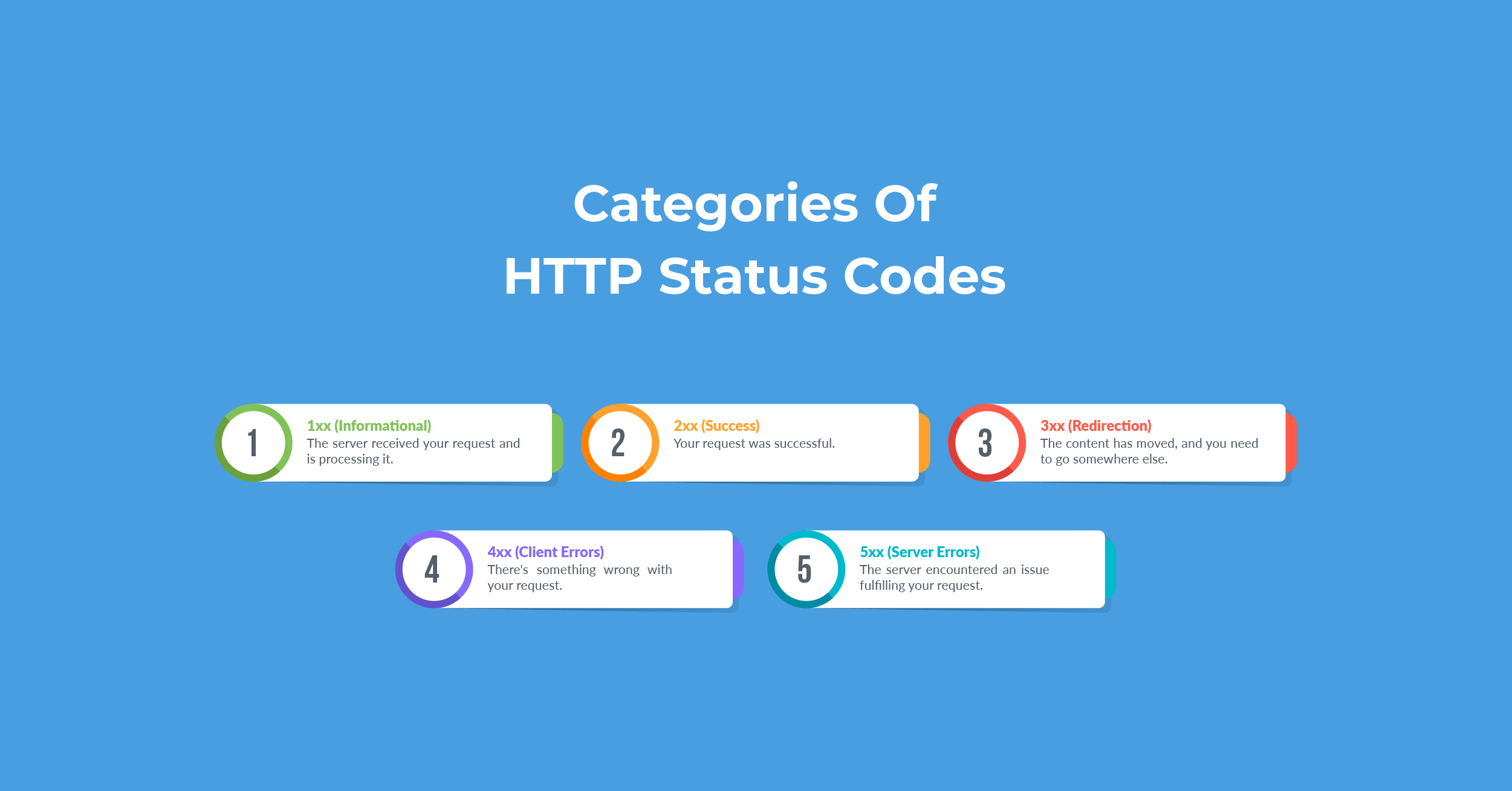Browsing the internet is a process of interaction between your web browser and the web server where the website or application you are accessing is hosted. From your clicks, page loads, and utilization of app features, everything generates an associated HTTP status code. These are three digit numbers that inform us whether our request was successful, redirected, or resulted in an error.
We can imagine these status codes as responses from a helpful clerk at the store (in this case, the server is the store): “Yes, we have it!” (Success), “Check over there.” (Redirection), or “Sorry, we’re closed.” (Error).
Regardless of your technical expertise and no matter what you usually do online, understanding HTTP status codes can help you troubleshoot browsing issues. If you are a developer, you can optimize website or app performance, and enhance the user’s online experience if you know what the codes mean.
How HTTP Requests Work
You need to know both how to drive a car and what the road signs mean to be a qualified driver. Just like that, first you should know the process behind using the internet to view a website. Here’s a summary:
- Type in a URL (e.g., www.espn.com) in your browser and hit enter.
- Your browser generates an HTTP request to the website’s server, asking for currently live content.
- The server processes the request and responds with:
- The requested content (if successful)
- A status code that explains what happened
This response determines what you see. Either the page loads normally, redirects elsewhere, or displays an error message.
Categories of HTTP Status Codes
HTTP status codes fall into five categories based on their first digit:
- 1xx (Informational): The server received your request and is processing it.
- 2xx (Success): Your request was successful.
- 3xx (Redirection): The content has moved, and you need to go somewhere else.
- 4xx (Client Errors): There’s something wrong with your request.
- 5xx (Server Errors): The server encountered an issue fulfilling your request.
Let’s explore these categories with real-world examples you’ve likely encountered.
1xx: Informational Status Codes
These are rare in everyday browsing, but they signal that a request is being processed.
- 100 Continue: Imagine uploading a large file. The server acknowledges, “I got the first part, keep going!”
- 101 Switching Protocols: Used when transitioning from HTTP to WebSockets for real-time communication.
2xx: Success Status Codes
These mean everything went smoothly.
- 200 OK: The most common response. If you’re reading this, your browser successfully retrieved this page with a 200 OK.
- 201 Created: When you sign up for an account or upload a file, the server confirms, “Your request worked, and I created something new!”
- 204 No Content: You delete an email, and the server acknowledges it without showing a new page—this is 204 No Content in action.
3xx: Redirection HTTP Status Codes
These codes indicate that the resource is somewhere else.
- 301 Moved Permanently: A webpage has moved permanently, like a change of address. Search engines update their records accordingly.
- 302 Found (Temporary Redirect): A temporary move, like a shop relocating for renovations but planning to return.
- 304 Not Modified: Your browser asks, “Has this page changed since I last visited?” The server replies, “Nope, use your cached version!”
4xx: Client Error Status Codes
These indicate problems with your request.
- 400 Bad Request: A malformed request—like filling out a form with invalid characters.
- 401 Unauthorized: You need to log in first. This is common when accessing restricted content.
- 403 Forbidden: Even with login credentials, you don’t have permission. Like trying to enter a staff-only area.
- 404 Not Found: The classic “Oops! This page doesn’t exist.” This happens when a link is broken or mistyped.
- 429 Too Many Requests: You’ve refreshed a page too many times or made excessive API requests—slow down!
5xx: Server Error Status Codes
These mean the issue is on the server’s end.
- 500 Internal Server Error: A general error, like ordering food and the kitchen encountering an unexpected problem.
- 502 Bad Gateway: The server acting as a middleman got a confusing response from another server—like getting bad intel from a source.
- 503 Service Unavailable: The site is temporarily down for maintenance, like a store closing for lunch.
- 504 Gateway Timeout: The server waited too long for a response from another server and gave up.
Why HTTP Status Codes Matter
For Everyday Users
- Faster Troubleshooting: Seeing a 404? The page is missing. A 500? The website has issues.
- Better Browsing Experience: Understanding why you’re being redirected (301 or 302) or why a site isn’t loading (503).
For Developers & Webmasters
- Debugging & Optimization: The proper use of 200, 301, and 304 codes ensures faster, efficient website performance.
- SEO (Search Engine Optimization): Redirecting old URLs to updated content with 301 helps maintain rankings, while 404 errors need fixing to avoid losing traffic.
- API Management: APIs use status codes to signal whether requests succeed (200), fail (400), or need authentication (401).
Conclusion: HTTP Status Codes are Quick Responses
HTTP status codes are not a complicated puzzle. Once you get the gist of each type of status code, you can generally recall the meaning of the status without having to look it up. The key takeaways are that a behind-the-scenes process occurs whenever you browse online. Each action elicits a response, which is essentially the HTTP status code.
For general users, it’s good to know these so you can follow resolution steps when faced with an error. If you can’t resolve the issue on your own, the status codes certainly can clarify if the problem is on your end, so you can contact a professional for help.
So next time you hit a 404, you’ll know exactly what’s going on!
